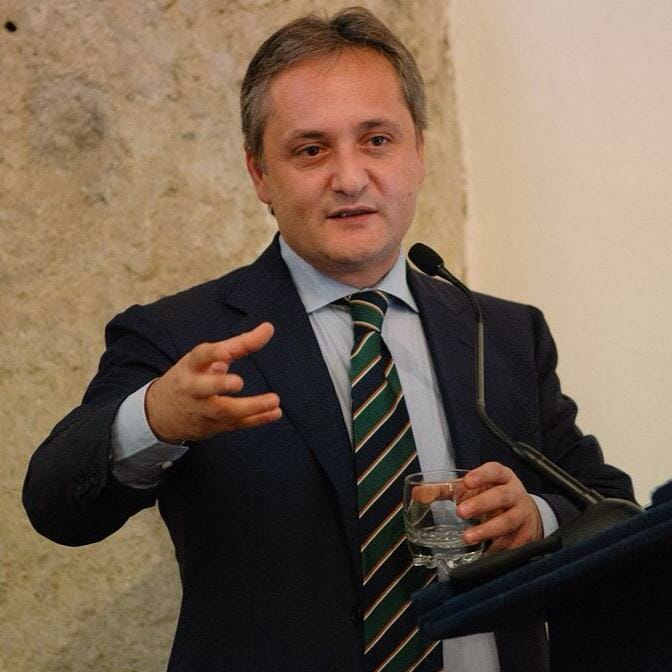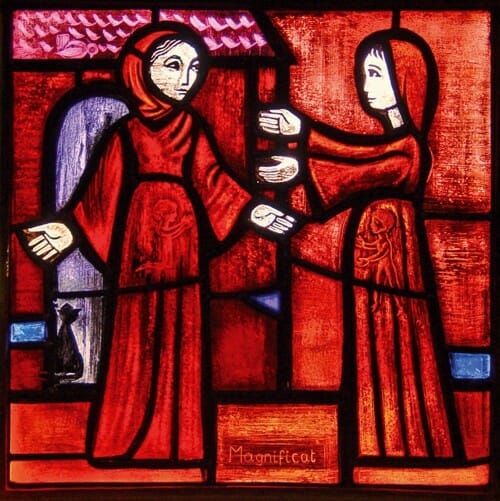

Environmental protection is also a matter of justice
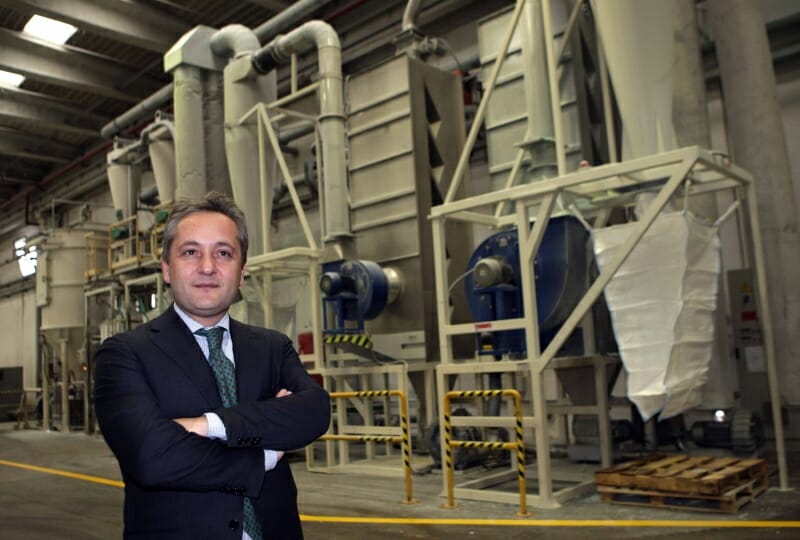
Business, Legality, Environment: A Win-Win Challenge
Doing business today is no easy “business.” Especially in Caserta, a region of southern Italy known as the “land of fire” because of its toxic waste dumps. Yet, it is a “splendid land,” said Bishop D’Alise during the visit of Pope Francis – that has become a dumping ground of waste. The unemployment takes your breath away and steals away the hope of upcoming generations.” An interview with Antonio Diana, president of Erreplast, a local waste recycling industry: How did it happen that you found yourself at the head of a business like yours? On June 26, 1985, my father, Mario Diana, a business owner, became an innocent victim of the camorra, leaving our family at a crossroads: to seek a future in more peaceful territories, or continue to bear witness that the social, moral and cultural rebirth of this region is possible. Along with many honest people, after thirty years we can say that we have also contributed in some modest way to restoring hope to the youth and to the territories of this province.” But really, can you run a business in an ethical manner in a context that is so problematic, and in such a critical sector as waste? “You can, provided you don’t comply with the common practices of staying on the market while falling into comprimises. Even though the risk of appearing folly, it is concrete. At present, the group consists of 5 businesses, more than 160 people, a volume of deals amounting to 40 million Euros, 5 industiral collection and recycling plants fore recycling and waste packaging of more than 80,000 tons per year.” “We know that in your programmes besides the ongoing innovation in work practices, particular attention is given to the environment, sustainability. . . “In June 2013 we created a Foundation named after my father, whose goal is to promote projects in favour of the environment and of the local region, appreciation of botht the national and local historical and artistical culture, and the education of young people with projects carried out in collaboration with universities.” How can you manage to stay afloat despite the competitiveness? “We know that the so-called black market, counterfeiting, money lender loans and corruption interfere with the mechanisims of the market and disrupt competition. Those who act illegally do have advantages when it comes to competition, but they never generate a healthy industrial system, which is the backbone of advanced societies. But, whereas illegal behavour in the long run dulls the ability to grow skill and creativity, the best practices of legality lead to flexibility and efficiency that lead to improvement in the quality of processes and products. Long-term projects, regular hiring and paying, avoiding waste, disposing of waste properly – all this allows the business to be competitive in the real market economy.” You you say a few words about human resources? “I’ve always tried to create a workplace that combines economic results with the advancement of society. I’m convinced that a business needs to discover that it is essentially a community of flesh –and-blood people, people who give meaning to what they do when they recognise the contribution they are giving to society. And this is achieved by acknowledging and appreciating the dignity of each person’s work, through transparency and sharing of the projects.”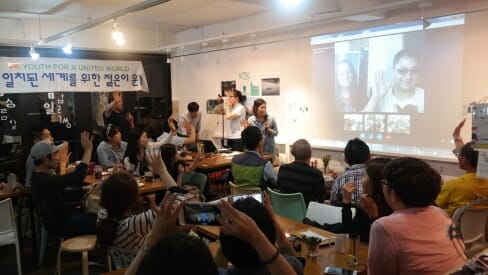
South Korea: families and young people in solidarity
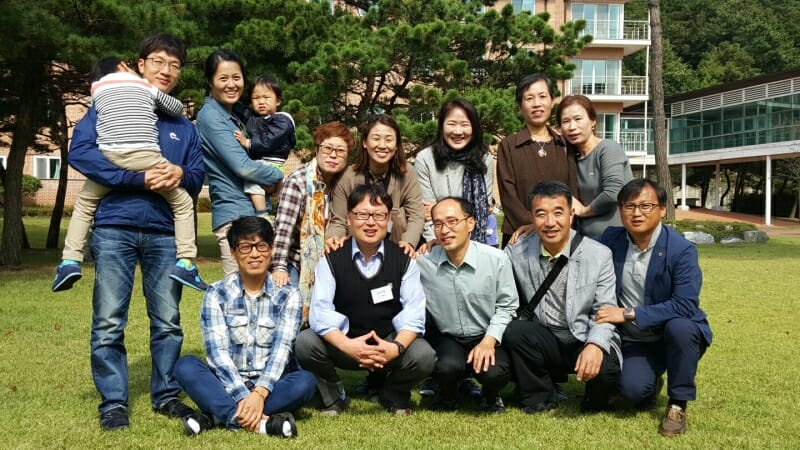 In 2015, in conjunction with the Synod on the Family, the activities certainly could not have gone by without some exclusive event organised by the Focolare families that are very active in South Korea. In this time of crisis in family relationships, in the Chong Hasang Education Center of Seoul, and simultaneously in Pohang, the 2-4 October weekend was dedicated to a ”School of forgiveness for couples” held for 120 couples. In the end, the couples all agreed on the need for true dialogue between spouses. “Instead of burying pettiness and hurt feelings – a couple said – we have to face the situation with courage, discuss it, and ask and receive pardon.” It was a dialogue we experimented on and which they now believe to be essential to renew, and be able to communicate to each other, the things they are unable to say.
In 2015, in conjunction with the Synod on the Family, the activities certainly could not have gone by without some exclusive event organised by the Focolare families that are very active in South Korea. In this time of crisis in family relationships, in the Chong Hasang Education Center of Seoul, and simultaneously in Pohang, the 2-4 October weekend was dedicated to a ”School of forgiveness for couples” held for 120 couples. In the end, the couples all agreed on the need for true dialogue between spouses. “Instead of burying pettiness and hurt feelings – a couple said – we have to face the situation with courage, discuss it, and ask and receive pardon.” It was a dialogue we experimented on and which they now believe to be essential to renew, and be able to communicate to each other, the things they are unable to say. 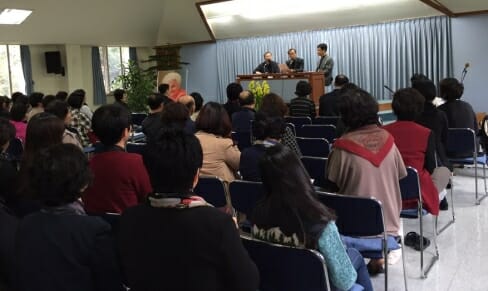 Also the people involved in the parish – 119 of them from all the dioceses of South Korea – had their moment of growth. Accompanied by 18 priests and five religious, on 26 October they reflected on the ”Parish, home of friendship, school of communion.” It was a day lived in the spirituality of unity to contribute to the quality of service to the parish, in full communion of the laity amongst themselves and with the priests, beyond all differences in roles, age, and viewpoints. The testimonials confirmed that misunderstanding and conflicts can be overcome through mutual charity, and unity be reached through reconciliation. All of this was to the benefit of the parish community.
Also the people involved in the parish – 119 of them from all the dioceses of South Korea – had their moment of growth. Accompanied by 18 priests and five religious, on 26 October they reflected on the ”Parish, home of friendship, school of communion.” It was a day lived in the spirituality of unity to contribute to the quality of service to the parish, in full communion of the laity amongst themselves and with the priests, beyond all differences in roles, age, and viewpoints. The testimonials confirmed that misunderstanding and conflicts can be overcome through mutual charity, and unity be reached through reconciliation. All of this was to the benefit of the parish community.  “A day at the cafe for Nepal.” Objective: to raise funds for Ramjung where there had been that terrible earthquake last April. This was the invitation launched by the Youth for a united world on Saturday, 5 September, in a bar in Seoul. The key moment was the video-connection with three other Asian cities, Katmandu, Mumbai and precisely India, from which came the story of those who managed to send aid to Nepal: doing part-time jobs, and organizing dinners and concerts. One of them was Natasha who despite being jobless donated 5,000 rupees, and after that experienced the gospel’s hundredfold: three days later she was hired by a company. It has now become a tradition. In a dining hall reserved for the deputies of the Korean parliament, the Focolare held, for those who wished to attend, the monthly Social Forum for unity that reached its 32nd edition on 17 September. In that session they presented the “Rainbow Dream Project,” an educational, recreational program for schools that started out from an integral vision of the person (white, as the colour of light) intercepting the seven main educational aspects (corresponding to the seven colours of the rainbow). Each colour was matched with a behavioural attitude which in turn embraced multifaceted dimensions, while keeping a unitary focus that adjusts to the specific situations the student has to face. The project also provided a community reading session of a phrase from the Gospel at the start of each month, which alternated with the sharing of concrete experiences on this phrase, broadcasted on radio. This project has been ongoing in the Maegoe High School of Chungbuk since 2009. At that time, someone who was worried about the new assignment as Dean, had suggested to Fr. Matteo Park to introduce the spirituality of unity in the school syllabus. Saturday, 28 November saw the launch of the “Bring carbon” Project of the Youth for a united world. Carbon and fuel were donated to the elderly abandoned people living alone, to heat up their homes. But it is just an excuse to touch base, and to arouse awareness in the youth. “Open the taps – one of them surprisingly wrote – and there is abundant hot water running; press a button and the heater warms up the whole house, and you can stretch out under a comforter and watch TV. This was what I used to consider as an ordinary winter day. And I thought that it was but natural for everyone … but now I know that there is someone next to me who needs my love…..”
“A day at the cafe for Nepal.” Objective: to raise funds for Ramjung where there had been that terrible earthquake last April. This was the invitation launched by the Youth for a united world on Saturday, 5 September, in a bar in Seoul. The key moment was the video-connection with three other Asian cities, Katmandu, Mumbai and precisely India, from which came the story of those who managed to send aid to Nepal: doing part-time jobs, and organizing dinners and concerts. One of them was Natasha who despite being jobless donated 5,000 rupees, and after that experienced the gospel’s hundredfold: three days later she was hired by a company. It has now become a tradition. In a dining hall reserved for the deputies of the Korean parliament, the Focolare held, for those who wished to attend, the monthly Social Forum for unity that reached its 32nd edition on 17 September. In that session they presented the “Rainbow Dream Project,” an educational, recreational program for schools that started out from an integral vision of the person (white, as the colour of light) intercepting the seven main educational aspects (corresponding to the seven colours of the rainbow). Each colour was matched with a behavioural attitude which in turn embraced multifaceted dimensions, while keeping a unitary focus that adjusts to the specific situations the student has to face. The project also provided a community reading session of a phrase from the Gospel at the start of each month, which alternated with the sharing of concrete experiences on this phrase, broadcasted on radio. This project has been ongoing in the Maegoe High School of Chungbuk since 2009. At that time, someone who was worried about the new assignment as Dean, had suggested to Fr. Matteo Park to introduce the spirituality of unity in the school syllabus. Saturday, 28 November saw the launch of the “Bring carbon” Project of the Youth for a united world. Carbon and fuel were donated to the elderly abandoned people living alone, to heat up their homes. But it is just an excuse to touch base, and to arouse awareness in the youth. “Open the taps – one of them surprisingly wrote – and there is abundant hot water running; press a button and the heater warms up the whole house, and you can stretch out under a comforter and watch TV. This was what I used to consider as an ordinary winter day. And I thought that it was but natural for everyone … but now I know that there is someone next to me who needs my love…..”
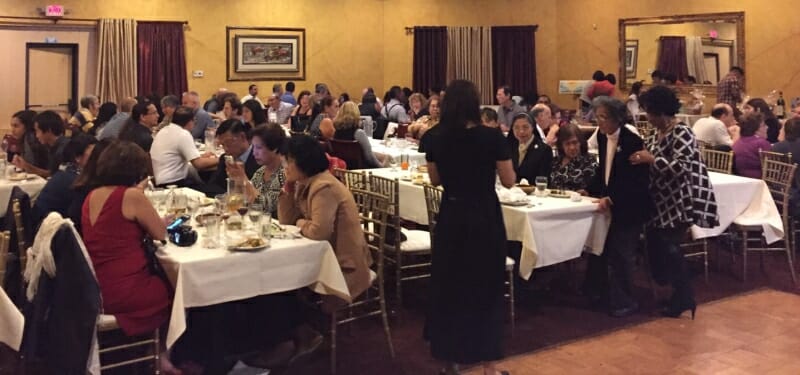
Artisans of peace on the increase
All of us here are involved in helping refugees to integrate in our coundry,” they write from Germany. “Some of us give German lessons, some provide lodging, some give of their time to be with the refugees. We are currently waiting for the arrival of 9 unaccompanied minors from Syria and Afghanistan. They’ll live for six months at our centre in Ottmaring where they will be assisted by social workers from the city.” 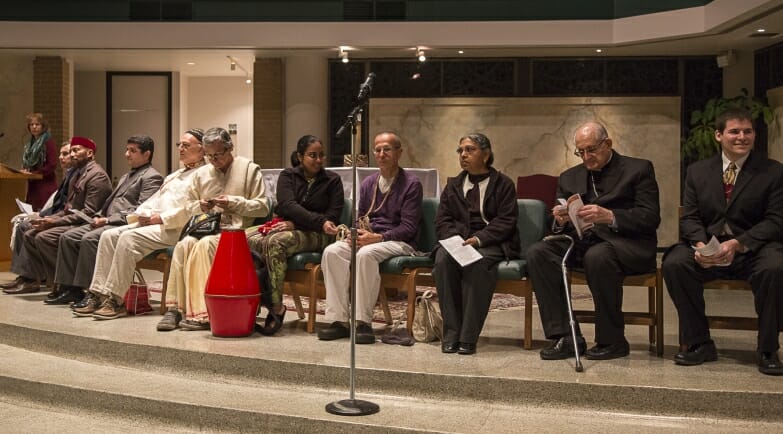 “Here in Dallas,” they write from Texas, “we held a peace march to raise funds for Syrian refugees.” “In Houston “We got together for a day of team building. With games, work groups, and so forth we learned how to be a team. On November 22 we held an interreligious prayer for peace. It was attended by Jews, Muslims, Hindus and Christians. The Archbishop also joined us.”
“Here in Dallas,” they write from Texas, “we held a peace march to raise funds for Syrian refugees.” “In Houston “We got together for a day of team building. With games, work groups, and so forth we learned how to be a team. On November 22 we held an interreligious prayer for peace. It was attended by Jews, Muslims, Hindus and Christians. The Archbishop also joined us.”  From California they tell us that the benefit dinner for refugees from the Middle East included a hundred people from different cultures and Churches. After praying for the victims of the terrorist attacks in Beirut and Paris, some young people presented several of their projects for refugees, from around the world, which are connected to the United World Project, an international platform for providing visibility to small and large-scale projects. Everyone agreed that through dialogue everyone can sow hope in their own corners of the world. A benefit dinner will also be held in San Francisco in December. “From October 30th, at Centro Luminosa in Spain, a community prayer service will be held every Saturday evening, animated by different groups of people each time: youth, families, priests. . .) It will be the starting point for becoming more actively involved in concrete efforts for peace. There was a very energetic response from Bahia Blanca, Argentina, following the November 20th event in the Square. The idea was to invite everyone – absolutely everyone – to learn more about building peace. The launching of the event which was covered by a local radio station, was then broadcast on social media. At 19:30 the Square began to be covered in colour and music. Banners, posters and fliers offered ideas on how to resolve conflicts through dialogue and thus generate peace: giving a smile, discussing without shouting, doing to others what you would have done to you, and so on. On stage there were songs, brief presentations and dances (one choir offered to sing because of an invitation on Facebook.) “The experience of today is only a first step, which confirms that when you are together small things become powerful. And so it is urgent that we get moving beginning with our daily life.” In Parana, Argentina, the local community organised two ecumenical evenings of prayer for peace and for the persecuted because of their faith, animated by members of the different Churches with whom they are in contact. With testimonies of refugees and the families that took them in, besides the heartfelt prayer, they wanted to give visibility to the amount of road we have already covered in learning about, welcoming and including others. From Tokyo, Japan, they report a large sum of money that was gathered at the “Syrian Cafe” (a place for encounter and dialogue), which will be sent to Damascus. And we add that in Asunción, Paraguay, on December 18-20 there will be a camp for peace, organised by Teens for Unity, one of the junior sections of the Focolare.
From California they tell us that the benefit dinner for refugees from the Middle East included a hundred people from different cultures and Churches. After praying for the victims of the terrorist attacks in Beirut and Paris, some young people presented several of their projects for refugees, from around the world, which are connected to the United World Project, an international platform for providing visibility to small and large-scale projects. Everyone agreed that through dialogue everyone can sow hope in their own corners of the world. A benefit dinner will also be held in San Francisco in December. “From October 30th, at Centro Luminosa in Spain, a community prayer service will be held every Saturday evening, animated by different groups of people each time: youth, families, priests. . .) It will be the starting point for becoming more actively involved in concrete efforts for peace. There was a very energetic response from Bahia Blanca, Argentina, following the November 20th event in the Square. The idea was to invite everyone – absolutely everyone – to learn more about building peace. The launching of the event which was covered by a local radio station, was then broadcast on social media. At 19:30 the Square began to be covered in colour and music. Banners, posters and fliers offered ideas on how to resolve conflicts through dialogue and thus generate peace: giving a smile, discussing without shouting, doing to others what you would have done to you, and so on. On stage there were songs, brief presentations and dances (one choir offered to sing because of an invitation on Facebook.) “The experience of today is only a first step, which confirms that when you are together small things become powerful. And so it is urgent that we get moving beginning with our daily life.” In Parana, Argentina, the local community organised two ecumenical evenings of prayer for peace and for the persecuted because of their faith, animated by members of the different Churches with whom they are in contact. With testimonies of refugees and the families that took them in, besides the heartfelt prayer, they wanted to give visibility to the amount of road we have already covered in learning about, welcoming and including others. From Tokyo, Japan, they report a large sum of money that was gathered at the “Syrian Cafe” (a place for encounter and dialogue), which will be sent to Damascus. And we add that in Asunción, Paraguay, on December 18-20 there will be a camp for peace, organised by Teens for Unity, one of the junior sections of the Focolare.
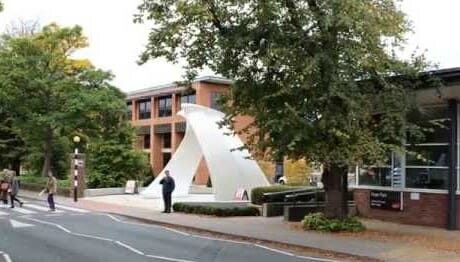
A new gate for Hope Park designed by Ave Art Centre
 A new gate has been opened at Hope Park, Liverpool, to replace the tall walls that have historically separated the colleges of Hope University , England. The new architectural structure joins two university schools, one Roman Catholic and the other Anglican, which comprise the first and only ecumenical university of Europe. The exhibition, which was inaugurated on 28 September, was organised by the Ave Arts Centre in Loppiano. The seven artists who work there aim to express, through their artwork, the ideals of unity and universal brotherhood which inspired Chiara Lubich. The partnership with the art studio was born from a visit by Vice-Chancellor and Rector, Dr. Phillay to the Internationanl Centre of Loppiano for a conference at Sophia University Institute. At the dedication ceremony of the New Gate, the Vice-Chancellor explained the inspiration for the shape and design of the gate which stems from the tradition of the Maori people in New Zealand, whose villages had “Waharoa,” an open gate that became a symbol of the village and a sign of openness and welcome to guests and visitors. “In the same way,” continued Dr. Phillay, “this new gate marks the entrance for students and professors into the ‘community of life’ of Hope University, focused – in accordance with the orientation of Cardinal John Henry Newman, towards a wholisitc cultural and human formation, capable of ‘accepting the value of one’s own academic discipline within the context of all the others.” Nunzia Bertali, from the Italian Consulate, officially inaugurated the New Gate by cutting the ribbon. She said: “What a great occasion and privilege to be asked to inaugurate the New Gate. I can only be proud of this link between England and Italy. It is a fantastic idea and great opportunity to link the two countries.” Watch the video. New Gate, inspiration at the service of unity Sculptress Erika Ivacson from the Ave Centre, described the New Gate in this way: “It is an arch, a bridge that is born from the encounter between two similar yet distinct elements. In the language of sculpture the two distinct forms have reached a harmony and a unity in diversity. Passing through the New Gate, anyone should find themself in a fulfilling experience that points to something greater, to belonging and identity. The Biblical texts inserted on the interior of the sculpture echo the message. And as the plaque at the side of the sculpture states: May passing through this gate each day be a living affirmation of the ecumenical foundations of this univeristy.
A new gate has been opened at Hope Park, Liverpool, to replace the tall walls that have historically separated the colleges of Hope University , England. The new architectural structure joins two university schools, one Roman Catholic and the other Anglican, which comprise the first and only ecumenical university of Europe. The exhibition, which was inaugurated on 28 September, was organised by the Ave Arts Centre in Loppiano. The seven artists who work there aim to express, through their artwork, the ideals of unity and universal brotherhood which inspired Chiara Lubich. The partnership with the art studio was born from a visit by Vice-Chancellor and Rector, Dr. Phillay to the Internationanl Centre of Loppiano for a conference at Sophia University Institute. At the dedication ceremony of the New Gate, the Vice-Chancellor explained the inspiration for the shape and design of the gate which stems from the tradition of the Maori people in New Zealand, whose villages had “Waharoa,” an open gate that became a symbol of the village and a sign of openness and welcome to guests and visitors. “In the same way,” continued Dr. Phillay, “this new gate marks the entrance for students and professors into the ‘community of life’ of Hope University, focused – in accordance with the orientation of Cardinal John Henry Newman, towards a wholisitc cultural and human formation, capable of ‘accepting the value of one’s own academic discipline within the context of all the others.” Nunzia Bertali, from the Italian Consulate, officially inaugurated the New Gate by cutting the ribbon. She said: “What a great occasion and privilege to be asked to inaugurate the New Gate. I can only be proud of this link between England and Italy. It is a fantastic idea and great opportunity to link the two countries.” Watch the video. New Gate, inspiration at the service of unity Sculptress Erika Ivacson from the Ave Centre, described the New Gate in this way: “It is an arch, a bridge that is born from the encounter between two similar yet distinct elements. In the language of sculpture the two distinct forms have reached a harmony and a unity in diversity. Passing through the New Gate, anyone should find themself in a fulfilling experience that points to something greater, to belonging and identity. The Biblical texts inserted on the interior of the sculpture echo the message. And as the plaque at the side of the sculpture states: May passing through this gate each day be a living affirmation of the ecumenical foundations of this univeristy.
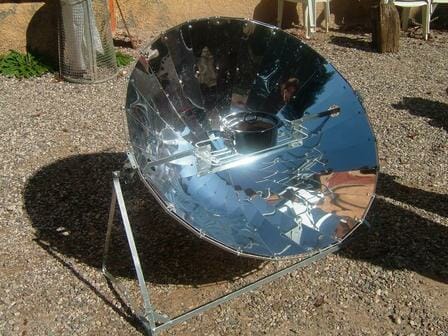
Cop21: solar kitchens for Haiti
 The Solar kitchen project for Mont-Organisé (Haiti) «was conceived due to the desire to help Haiti counter its social and environmental crisis related to deforestation, through the introduction of kitchens powered by solar energy. This device is based on solar energy concentration that generates thermal energy from the sunlight passed through a lens. The energy is amassed in a thermal “battery” that can withhold the heat for 20 hours, thus enabling cooking to be done also at night. The materials chosen to make the kitchens are sustainable and biodegradable, and the device obviously does not require fuel, explained the report drafted in view of the climate conference in Paris (30 November – 11 December 2015). It is dedicated to a series of excellent experiences in the Italian electrical supply chain to produce or optimise energy without emissions. The project, in fact, was singled out from the “100 Italian energy stories” of Enel and the Symbola Foundation. The Solar Kitchens project for Mont-Organisé (Haiti) was presented last 4 July at the Expo 2015 in Milan by AFNonlus, in collaboration with the National Microcredit Agency, the Federico II University of the Agricultural Dept. of Naples, Tesla IA Ltd. and PACNE ONG. It has now landed in the World Climate Conference (Cop21) of Paris, where political leaders and experts of 190 countries are involved in delineating a programme that can save the planet. «The climate challenge which from 30 November to 11 December will see the world gathered in Paris for the COP21, does not only regard the environment,» the Report underlined, but «is a geopolitical, technological, economic and social challenge. It is a challenge for the future, which we can overcome if we firmly undertake a green economy, and clean and efficient energy.” Enel and Symbola recount a new course consisting of innovation and quality, and research and competitiveness in the search for the ”100 Italian Energy Stories.” It is a programme for sustainable energy undertaken in our country [Italy] by enterprises, research agencies and associations.» AFNonlus (Association of Action for New Families non-profit org.) was inspired by the principles of the Focolare Movement which has been operating for over 30 years in 50 countries to support the disadvantaged families and children through projects of cooperation for development.
The Solar kitchen project for Mont-Organisé (Haiti) «was conceived due to the desire to help Haiti counter its social and environmental crisis related to deforestation, through the introduction of kitchens powered by solar energy. This device is based on solar energy concentration that generates thermal energy from the sunlight passed through a lens. The energy is amassed in a thermal “battery” that can withhold the heat for 20 hours, thus enabling cooking to be done also at night. The materials chosen to make the kitchens are sustainable and biodegradable, and the device obviously does not require fuel, explained the report drafted in view of the climate conference in Paris (30 November – 11 December 2015). It is dedicated to a series of excellent experiences in the Italian electrical supply chain to produce or optimise energy without emissions. The project, in fact, was singled out from the “100 Italian energy stories” of Enel and the Symbola Foundation. The Solar Kitchens project for Mont-Organisé (Haiti) was presented last 4 July at the Expo 2015 in Milan by AFNonlus, in collaboration with the National Microcredit Agency, the Federico II University of the Agricultural Dept. of Naples, Tesla IA Ltd. and PACNE ONG. It has now landed in the World Climate Conference (Cop21) of Paris, where political leaders and experts of 190 countries are involved in delineating a programme that can save the planet. «The climate challenge which from 30 November to 11 December will see the world gathered in Paris for the COP21, does not only regard the environment,» the Report underlined, but «is a geopolitical, technological, economic and social challenge. It is a challenge for the future, which we can overcome if we firmly undertake a green economy, and clean and efficient energy.” Enel and Symbola recount a new course consisting of innovation and quality, and research and competitiveness in the search for the ”100 Italian Energy Stories.” It is a programme for sustainable energy undertaken in our country [Italy] by enterprises, research agencies and associations.» AFNonlus (Association of Action for New Families non-profit org.) was inspired by the principles of the Focolare Movement which has been operating for over 30 years in 50 countries to support the disadvantaged families and children through projects of cooperation for development.

Mercy from the viewpoint of a nonbeliever
 The Indiction of the Jubilee of Mercy has taken the word “mercy” far beyond Vatican walls, and to the ears of the secular world it can sound outdated and laden with religious significance. The nonbeliever tends from the start to not accept the mystical meanings with which this word is usually invested, especially now as it is raised to disturbing centrality in worldly society. The nonbeliever finds synonyms, or presumed synonyms, that would allow the word to be taken beyond the borders of Christianity: pity, compassion, empathy . . . in a growing confusion that the online dictionaries are not able to reduce. The first impulse is to identify it with “pity,” the sentiment of people with “compassion,” of people who emotionally perceives the sufferings of others as their own and would like to alleviate them (and, by the way, in Christianity the term “pity” is close to the term “mercy”.) Well, then, why not “empathy” which is not a feeling but an ability to fully understand the state of soul of others, to place oneself in someone else’s shoes especially after the discovery by neurosurgeons on the mirror neurons that tends to confirm that empathy does not have its origins in intellectual effort but in the genetic code of the species? Words such as pity, mercy compassion, like all respectable words, will have their positive and negative meanings. Just think of the derogatory meaning of phrases such as: “I feel pity for you;” or “I pity you;” “He needs to be pitied.” What about the misericorde weapon that was used in medie-val times to deliver the death stroke, the “mercy stroke”? You will say that “mercy” is compassion, yes, but “active” compassion that is substantiated by action, by works. And it may be that it represents a fundamental concept, which is key to the Christian life, as the Dr. Cardinal W. Kasper underscores. Well, then you would need to distinguish between a Christian mercy and a secular mercy based on humanitarian values which, while they march side by side and intertwine, nevertheless belong to two different orders that are to be re-spected in their nature. Therefore, it is not a matter of contrasting secular good works with Christian good works, but of “searching for that hidden harmony that brings relief to the world;” and harmony – like dialogue – “is not given in homogeneity, but it lives in diversity. . .” Mario Frontini
The Indiction of the Jubilee of Mercy has taken the word “mercy” far beyond Vatican walls, and to the ears of the secular world it can sound outdated and laden with religious significance. The nonbeliever tends from the start to not accept the mystical meanings with which this word is usually invested, especially now as it is raised to disturbing centrality in worldly society. The nonbeliever finds synonyms, or presumed synonyms, that would allow the word to be taken beyond the borders of Christianity: pity, compassion, empathy . . . in a growing confusion that the online dictionaries are not able to reduce. The first impulse is to identify it with “pity,” the sentiment of people with “compassion,” of people who emotionally perceives the sufferings of others as their own and would like to alleviate them (and, by the way, in Christianity the term “pity” is close to the term “mercy”.) Well, then, why not “empathy” which is not a feeling but an ability to fully understand the state of soul of others, to place oneself in someone else’s shoes especially after the discovery by neurosurgeons on the mirror neurons that tends to confirm that empathy does not have its origins in intellectual effort but in the genetic code of the species? Words such as pity, mercy compassion, like all respectable words, will have their positive and negative meanings. Just think of the derogatory meaning of phrases such as: “I feel pity for you;” or “I pity you;” “He needs to be pitied.” What about the misericorde weapon that was used in medie-val times to deliver the death stroke, the “mercy stroke”? You will say that “mercy” is compassion, yes, but “active” compassion that is substantiated by action, by works. And it may be that it represents a fundamental concept, which is key to the Christian life, as the Dr. Cardinal W. Kasper underscores. Well, then you would need to distinguish between a Christian mercy and a secular mercy based on humanitarian values which, while they march side by side and intertwine, nevertheless belong to two different orders that are to be re-spected in their nature. Therefore, it is not a matter of contrasting secular good works with Christian good works, but of “searching for that hidden harmony that brings relief to the world;” and harmony – like dialogue – “is not given in homogeneity, but it lives in diversity. . .” Mario Frontini
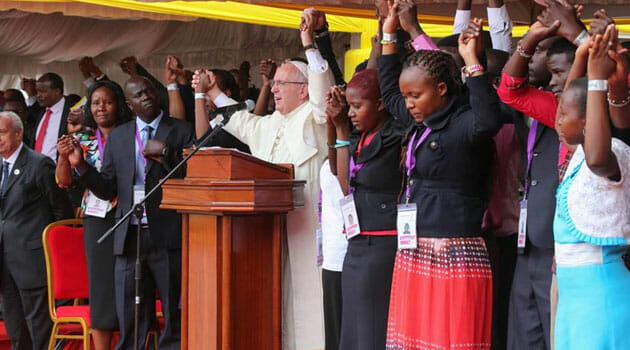
Opening of the Holy Year of Mercy
 We can still vividly see the images that reached us from Bangui, the capital of the Central African Republic, where Pope Francis demonstrated great courage, and where he opened the first “Door of Mercy.” On that day, 29 November, he said: «Today Bangui has become the spiritual capital of the world. The Holy Year of Mercy was opened in advance in this land which also represents all the countries that are undergoing the cross of war. Bangui has become the spiritual capital of prayer for the Father’s mercy.» And in referring to the chosen date of 8 December, the Pope explained in the Bull that «This liturgical feast indicates the concrete mercy God has always shown to mankind from the very first dawning of the history of humanity. After the sin of Adam and Eve, God did not want to leave humanity alone in the hands of evil. This is why he ideated and made Mary holy and immaculate (see Eph 1.4), so she would be the Mother of man’s Redeemer. Before the gravity of sin, God responded with the fullness of forgiveness. Mercy will always be greater than sin, and nobody can ever place a limit to the love of God who forgives.» «On the feast of the Immaculate Conception – continued Francis – I will have the joy of opening the Holy Door. It will be on this occasion that whoever will enter the first Door of Mercy will experience the love of God who consoles, forgives and gives hope. » But opening the first “holy door” in faraway Bangui is not an amazing novelty, since Francis wishes many doors to open throughout the world, to give all Christians the chance to enter them with the same effects of interior renewal as for those who will enter the door in Rome, the centre of Christendom. In fact, in the “Bull” the Pope continued by indicating that “on the next Sunday, the third of Advent, ‘the Holy Door’ in the Cathedral of Rome, the Basilica of St. John Lateran will be opened. In the subsequent days, the Holy Door in the other Papal Basilicas will also be opened. On the same Sunday, I establish that in the local Cathedrals in every particular diocese in the world, other ‘Doors of Mercy’ will be opened for all the faithful, for the entire Holy Year.». He requested that this also be done in the Sanctuaries where pilgrims go, and in all the «sacred places where people are often blessed with grace and find the path of conversion.» Every country will thus be directly involved in «living this Holy Year as an extraordinary moment of grace and spiritual renewal.» The jubilee will, however, be celebrated in Rome «as in all the local Churches worldwide as a visible sign of the communion of the entire Church.» Read the entire text: The Bull
We can still vividly see the images that reached us from Bangui, the capital of the Central African Republic, where Pope Francis demonstrated great courage, and where he opened the first “Door of Mercy.” On that day, 29 November, he said: «Today Bangui has become the spiritual capital of the world. The Holy Year of Mercy was opened in advance in this land which also represents all the countries that are undergoing the cross of war. Bangui has become the spiritual capital of prayer for the Father’s mercy.» And in referring to the chosen date of 8 December, the Pope explained in the Bull that «This liturgical feast indicates the concrete mercy God has always shown to mankind from the very first dawning of the history of humanity. After the sin of Adam and Eve, God did not want to leave humanity alone in the hands of evil. This is why he ideated and made Mary holy and immaculate (see Eph 1.4), so she would be the Mother of man’s Redeemer. Before the gravity of sin, God responded with the fullness of forgiveness. Mercy will always be greater than sin, and nobody can ever place a limit to the love of God who forgives.» «On the feast of the Immaculate Conception – continued Francis – I will have the joy of opening the Holy Door. It will be on this occasion that whoever will enter the first Door of Mercy will experience the love of God who consoles, forgives and gives hope. » But opening the first “holy door” in faraway Bangui is not an amazing novelty, since Francis wishes many doors to open throughout the world, to give all Christians the chance to enter them with the same effects of interior renewal as for those who will enter the door in Rome, the centre of Christendom. In fact, in the “Bull” the Pope continued by indicating that “on the next Sunday, the third of Advent, ‘the Holy Door’ in the Cathedral of Rome, the Basilica of St. John Lateran will be opened. In the subsequent days, the Holy Door in the other Papal Basilicas will also be opened. On the same Sunday, I establish that in the local Cathedrals in every particular diocese in the world, other ‘Doors of Mercy’ will be opened for all the faithful, for the entire Holy Year.». He requested that this also be done in the Sanctuaries where pilgrims go, and in all the «sacred places where people are often blessed with grace and find the path of conversion.» Every country will thus be directly involved in «living this Holy Year as an extraordinary moment of grace and spiritual renewal.» The jubilee will, however, be celebrated in Rome «as in all the local Churches worldwide as a visible sign of the communion of the entire Church.» Read the entire text: The Bull
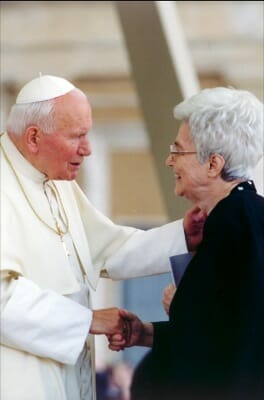
Light and giving oneself to God

(C) CSC Audiovisivi

